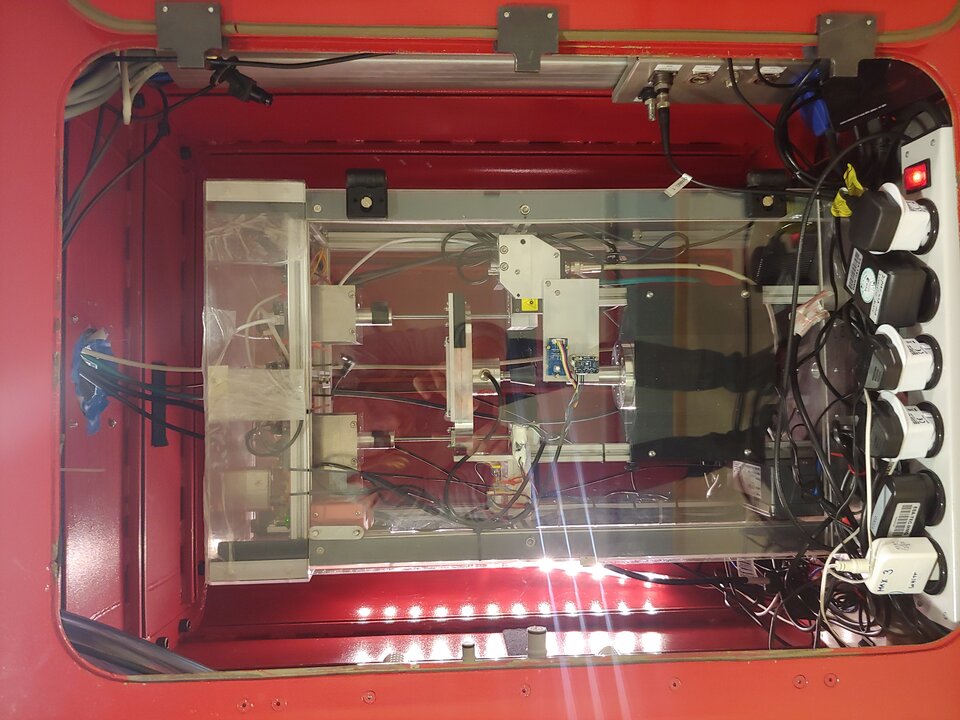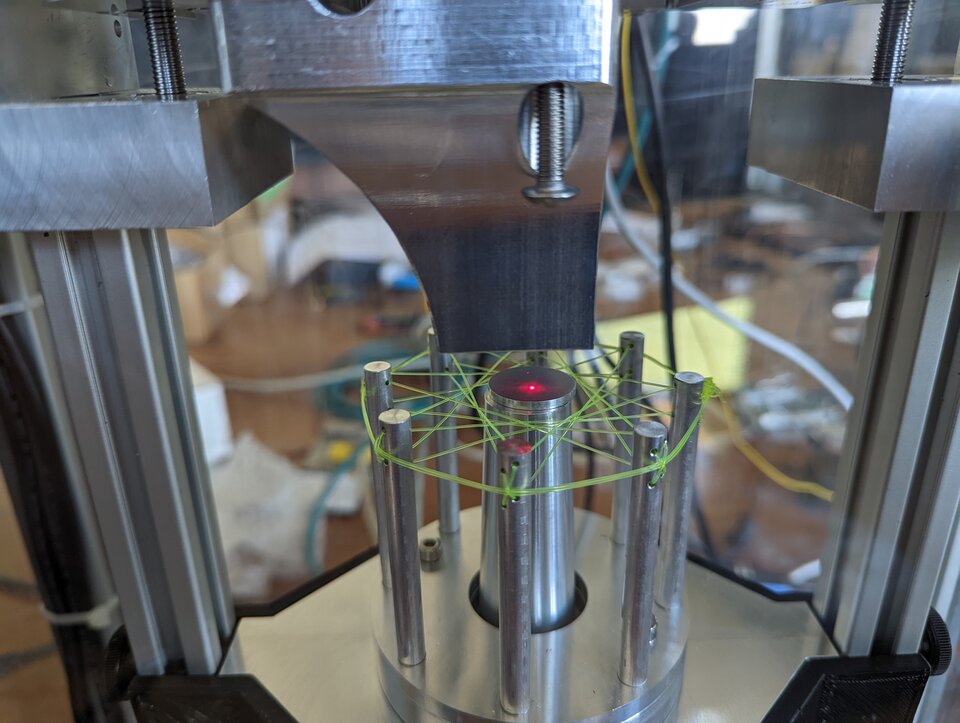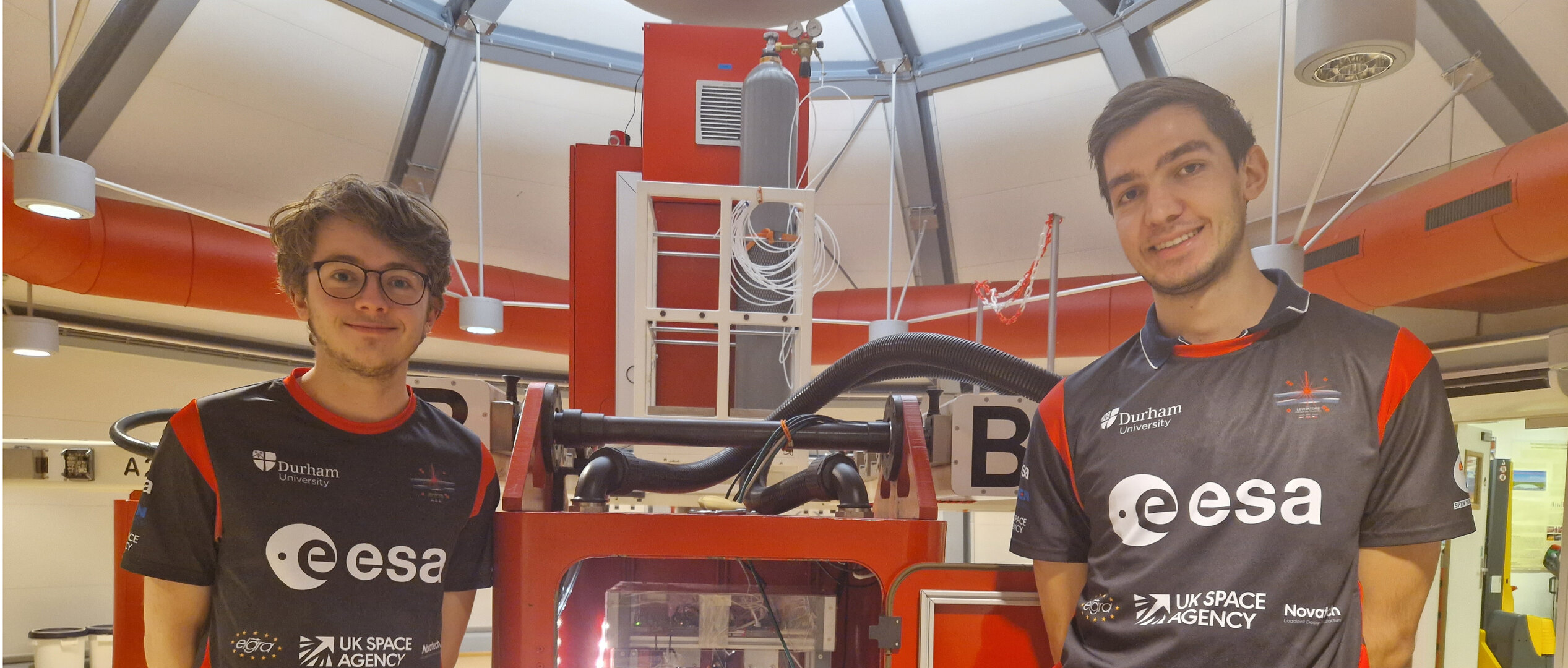Team ‘Levitators’ from Durham University complete hyper gravity experiment
In brief
After countless delays and setbacks, the persevering team from Durham University finally completed their experimental campaign at ESA ESTEC’s Large Diameter Centrifuge to determine the role of gravity in a phenomenon called Near Field Acoustic Levitation.
In-depth
A team of dedicated bachelor physics students from Durham University finished their experiment on Near-Field Acoustic Levitation (NFAL) which is a technique that uses sound waves to levitate and move small objects in the air. It works by generating high-frequency sound waves that create an acoustic field, which can be used to trap and move small objects.

This technique has several potential applications, including handling and transportation of small and fragile objects, manufacturing, and research. The main advantage of near field acoustic levitation is that it allows for the handling of small objects without physical contact, which can reduce the risk of damage and contamination. The Levitators team wanted to understand the behaviour of acoustically levitated objects under different conditions to be able to develop this technology even further. With no standard, universally-applicable theory describing the behaviour of objects in NFAL, hypergravity can be a useful tool to judge the validity of the current models. NFAL is often modelled as a standing-wave with the wave reflecting off the levitating object or by a film of high-pressure gas, creating a repulsive force on the object. However, not all behaviour of levitated objects is in agreement with the models when experiments are conducted; for example, the object is attracted towards the plate at certain distances and frequencies.
Until the Levitators completed their experiments, no investigations into NFAL had been performed in high- or microgravity conditions, and the team believed the behaviour of the object could be elucidated by accentuating the factors that are increased with high gravity. To accomplish these tasks, the team measured the levitation height, resonance frequency & amplitude and the net force acting on the levitated object. Such measurements were done for varying gravity intensities and transducer frequencies and amplitudes.
Misfortunes strike
Originally selected in late 2020 for a campaign in September 2021, the team suffered from the after-effects of Covid restrictions and other woes in logistical supplies around the world. This caused delays in deliveries of critical equipment without which the team could not proceed. Working closely with suppliers and having to manage lead times is a crucial part of any large project and as the team found out the hard way, if hardware cannot be obtained, projects come to a grinding halt.

The team worked on sourcing alternatives and eventually assembled the entire experiment and successfully achieved levitation as expected. All that was left was to ship the experiment to the Netherlands to integrate it into the Large Diameter Centrifuge gondolas. Misfortunes hit the team once more with shipping delays from the UK and some unfortunate breakages on the way also. This meant that only part of the experiment could be done in a short time frame.
The students and ESA decided to make up for lost time and have the team come once again to ESA ESTEC a few weeks later to complete their entire set of data collections just before the end of the year break, which concluded a tumultuous couple of years on a very positive note. The data will now be analysed and submitted to ESA for review and will hopefully soon be published, ending a long and hard project for the students which undoubtedly was extremely educational throughout.
If you are interested in participating in educational programmes such as the Levitators did, building your own experiment, please check out the PETRI prorgamme. PETRI allows student teams to gain a unique practical experience and training with the European Space Agency and partners which complements and enhances university students’ academic journey. It is a first-hand exposure to the professional world of research and development of space science and technology. Teams are guided through all the steps of developing their project from concept to operations and data analysis, including industry standard engineering practices, good project management, risk mitigation and effective fundraising techniques. The programme offers multiple platforms to conduct the experiment: the Large Diameter Centrifuge, the ZARM Drop Towers, the Parabolic flight and the ICECubes Facility on board the International Space Station.


